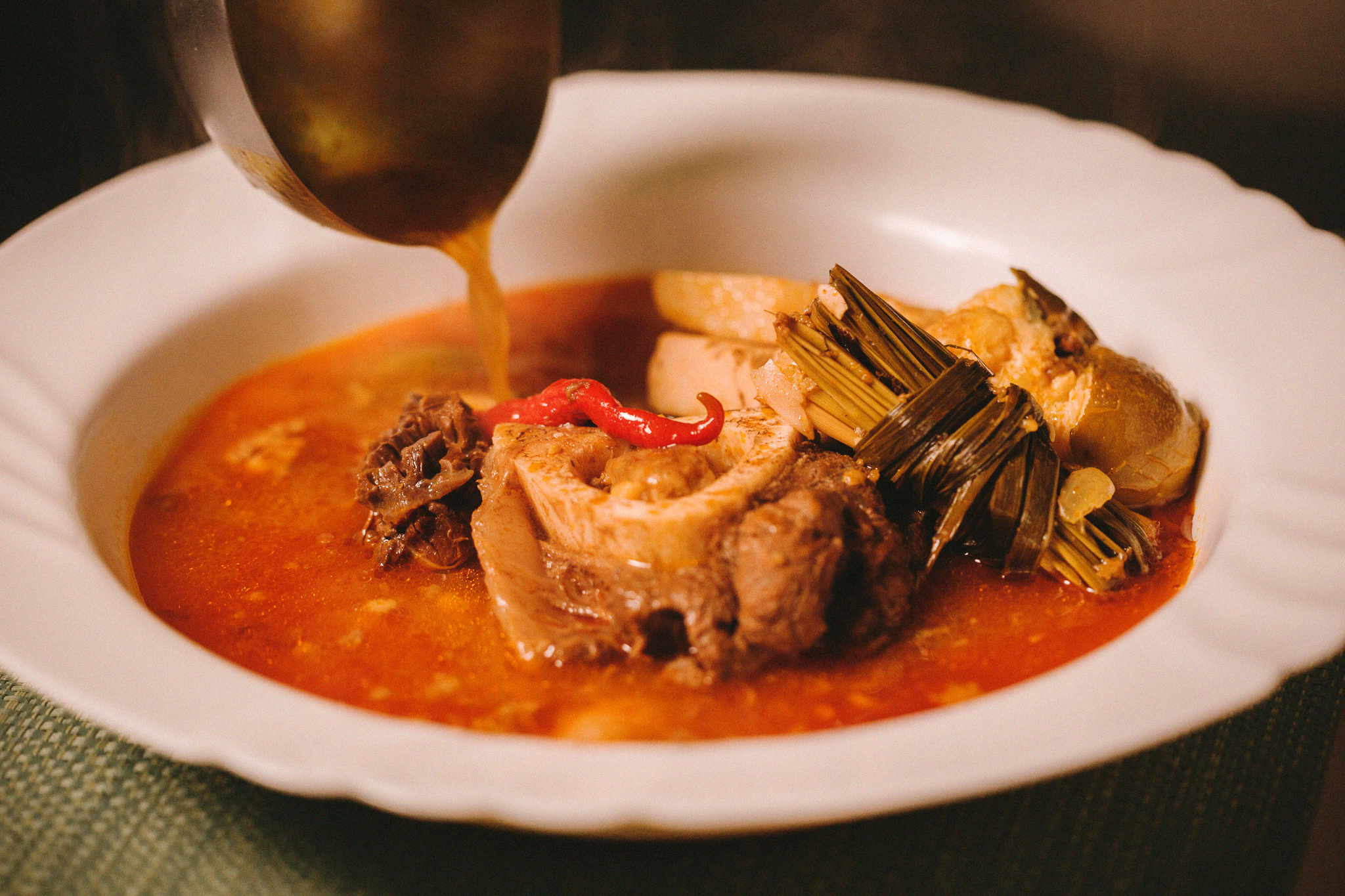Filipino cuisine - locally referred to as lutong Pinoy is a rich and storied blend of cuisines from more than a hundred distinct ethnolinguistic groups throughout the Philippines.
With over 7,600 islands and an ever increasing population of an estimated 109 million as per its 2020 census – the variety of food choices, options, and combinations are infinite.

Cansi – a popular Bacolod classic stew
The uninterrupted diaspora of Filipinos to all points around the globe through generations has made it impossible to track, much less claim ownership for mainstream Filipino dishes that now comprise Filipino cuisine.
Although we love Filipino cooking, vehement arguments over native food traditions and practices are a regular staple. Whether to validate or vindicate - our love of good food and beloved dishes are a favorite conversation topic.
Our conversations are richly peppered with what we ate, what we are about to eat, and what we are deciding to eat – all day, every day – it just never grows stale or ever forgotten.
Various local residents and home grown inhabitants as well as Filipinos working and living abroad take great interest and pride in Filipino cuisine. Process and preparation, research and history, influences and evolution – all these are avidly monitored and updated.
Major waves have impacted and enriched native cultures through the years. Several delicacies have been adjusted and adapted to indigenous ingredients and the local palate.
According to studies, the styles of preparation and coveted dishes have evolved over many centuries. From a largely indigenous base, Austronesian mostly, shared with maritime Southeast Asia.

Ingredients for our beloved cansi
Stews are a regular staple in our tables mainly because they are filling one-dish meals that can feed a whole household or village. They can easily be tossed in a large pot and left to cook all day long to tenderize ingredients and allow the flavors to steep and the aromas to permeate.
Beloved among the ruling regions - Ilocano, Pangasinan, Kapampangan, Tagalog,
Bicolano, Visayan, Chavacano and Maranao – is our very own Negrense cuisine.
The crowning glory and most popular local dish is cansi – often described as the beloved love child of bulalo [beef shank with marrow] and sinigang [sour broth stew]. All homes have their chosen comfort food and here in Bacolod cansi is ours.
It is customary to exhibit our famous hospitality at the end of a long drawn feast or large fiesta by serving a hefty stew or soup to absorb as much consumed alcohol and sober guests as much as possible before seeing them off safely. Cansi, with its sharp sour flavor, is a decided winner – adding that classic kick to wake us up before we go.
What makes cansi unique is its souring agent – batwan. Or batuan (pronounced bat-wan) is a fruit from an evergreen tree common in Southeast Asia. Abundant particularly in the low altitude forests of the Philippines and Vietnam. In the Visayas, it is used as a souring ingredient for many local food recipes, such as seafood and meat, sinigang, and paksiw.

Business Inn’s sizzling cansi steak
Loyal fans and first timers can explore the various ways this dish is prepared. Soup. Stew. Steak. Sisig. All so super sarap. Filipino kitchens and eateries all over the world serve their own favored recipes of cansi – a classic Bacolod favorite.
Here are some of the top featured choices from Negros Season of Culture. Bilbao’s. Business Inn. Conee’s. Eron’s. ICA. Sharyn’s.
All our local fare have been subject to varied influences – especially Chinese, Spanish, and American cuisines. Not many today recall that the fiesta menu declaring our independence from Spain was French – the global standard cuisine of formal dining and diplomacy of those times.
Today Filipino cuisine is recognized and sought after by a growing number of admirers. Filipinos who love their good food are too happy to share our bounty with the world. As the Philippines was brokered from one colonizer [Spain] to the next [North America] - it was a telling testament to the resilient Filipino spirit that we did our own conquering of palates and gastronomic delights.
True to the adage, the best way to the heart is through our sated stomachs. Back then, to celebrate the solemn ratification of the declaration of Philippines it was de riguer to have a French menu. Although the original inauguration menu is long lost, the Malolos menu for the lunch and dinner served on the 28th of September 1898 survived.
[I]n 1898 we had to have a French menu to show the world that the Filipinos were civilized and capable of governing themselves. [Today] we are a free and independent nation with a culture and food all our own comparable with any cuisine in the world. ~ Ambeth R. Ocampo, “Much Ado Over A Menu”, 19 November 2021.
Text by: Issa Urra
Photos and Video by: Unit A Creatives
YouTube Link: https://youtu.be/FCDM9ikVPes












